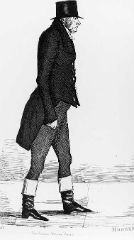Gibson-Craig Estate

The Gibson-Craig Estate papers are of particular interest to those researching the early history of Currie and Hermiston. The title deeds span from 1451 to 1776 and show the accumulation of lands surrounding Riccarton house such as Malcolmstone, Currie, Curriehill and Longhermiston into the estate and the changing ownership until the Craig family bought it in 1610. The general estate and family records include accounts, such as Lady Riccarton's dressmakers account from the 1680s, rental agreements, leases, legal documents, records relating to debt, marriage contracts and records of heritors and teinds. Of particular interest are maps showing the estate lands from the 1770s to 1870s, some showing the names of tenants.
Additional personal papers relate more to events outside the estate. The letters of Alexander Gibson, younger son of James Gibson-Craig, reveal the story of the seige of Danzig and include letters from Frederick the Great of Prussia. Records of the Forster family of Lucker in Northumbria, whose granddaughter Julia married Sir Henry Gibson-Craig, include leases, tythes, estate and family records. Archibald Buchanan, Julia's father, owned Catrine works cotton mill in Ayrshire and eventually bought Curriehill House. The records include business and family records.
The correspondence covers the 1820s to 1870s. Sir William Gibson-Craig was the MP for Midlothian and corresponded with leading political figures such as T B Macaulay, Fox Maule (Lord Ramsay) and Prime Ministers Sir Robert Peel and Viscount Melbourne. Of particular interest is a letter from Sir William Gibson-Craig to his father James immediately after the vote to finally abolish slavery in the West Indies in 1838. There are also letters on family and estate matters from other members of the family.
Key information
Museum and Archive Service
- +44 (0) 131 451 3218
- heritage@hw.ac.uk
Helen Taylor
- Archivist
- h.e.taylor@hw.ac.uk